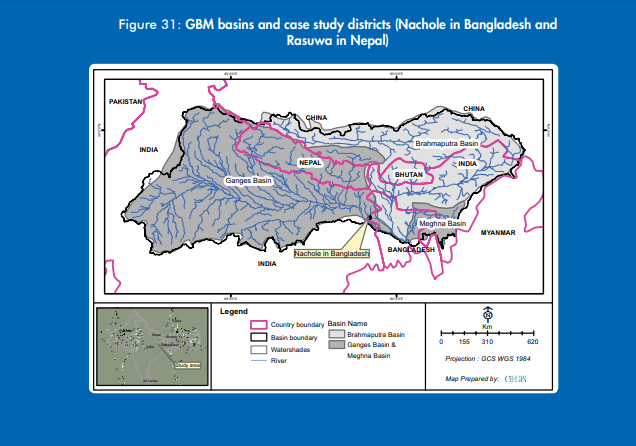Assessing the economic impact of climate change on agriculture, water resources and food security and adaptation measures using seasonal and medium range of forecast


Climate change is a growing food security concern for countries in the Ganges-Brahmaputra Meghna (GBM) basin; it is expected to have a direct impact on crop yield as a result of changes in temperature, precipitation, and carbon dioxide (CO2) concentration. Research is needed to identify the scale and distribution of the potential impacts and possible adaptation strategies to support policy development. This paper presents the results of a hydrological simulation of the components of water balance in the GBM basin in the 2050s under different climate scenarios. The impact on the yield of major crops in two representative districts in Bangladesh and Nepal was assessed using the Decision Support System for Agro-technology Transfer (DSSAT) tool with projections for future seasonal water availability, temperature, and CO2 concentration. The results indicate that the predominance of the monsoon season in water availability will increase by the 2050s, that there will be more frequent flood events of higher magnitude, and that groundwater recharge will increase. The change in surface water availability will be more pronounced during the pre-monsoon season in Nachole, Bangladesh and during the dry season in Rasuwa, Nepal. In Nachole, yield of monsoon season rice is projected to increase and of dry season rice to decrease; maize yield in Rasuwa, Nepal is projected to decrease. Three adaptation options were tested for reducing yield loss and addressing water stress issues. The results are discussed with a view to suggesting agricultural adaptation options and supporting formulation of water resources policy.